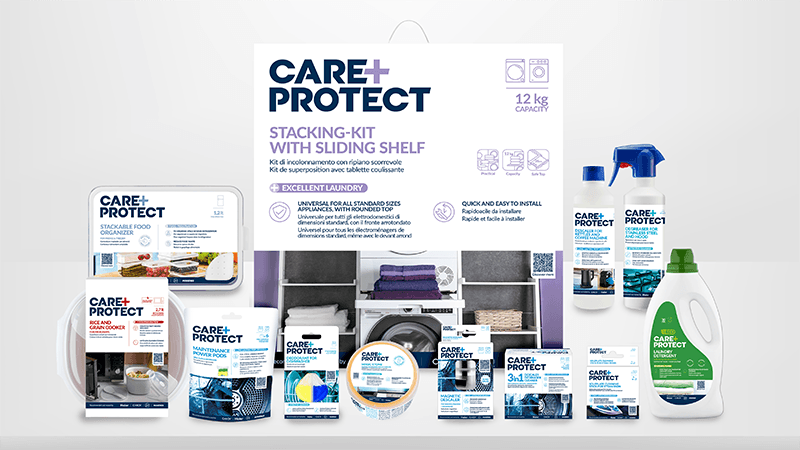
Dishwasher rinse aid: What is it and should you be using it?
Most of us are very comfortable using a dishwasher - just load it with dirty dishes and pop the dishwasher tablet in. Nothing could be simpler, right? However, there’s one aspect of these everyday kitchen appliances that stumps almost everyone: what exactly is dishwasher rinse aid, how do we get it in that little compartment and, more importantly, is it really necessary?
To understand the benefits of dishwasher rinse aid, we’ve put together this comprehensive but quick read to explain what rinse aid is, its advantages and how to decide if it’s right for you.
Understanding Dishwasher Rinse Aid
Rinse aid is a drying agent and water repellent that leaves dishes, glassware, cutlery and cookware gleaming. It optimises the dishwasher rinse cycle by transforming water droplets into thin sheets, making the drying cycle more efficient. Even if the water in your area isn’t considered ‘hard’, without rinse aid the common minerals found in tap water will leave spots on your dishes.
Advantages of using rinse aid
As perplexing as this product is, there are solid advantages to keeping that little compartment filled, and some are surprisingly good for your pocketbook and the environment:
- Spot-Free Dishes: by repelling the common minerals found in even soft water, your glasses, plates, and utensils won’t just be clean, they’ll sparkle. Cooking with glistening pans and enjoying meals on gleaming tableware makes even a simple meal feel luxurious.
- Improved Drying Performance: rinse aid makes the drying process more efficient, leaving dishes dry to the touch even on short cycles. No more towel-drying or waiting around for them to air-dry.
- Reduced Maintenance: rinse aid also reduces food residue and hard water deposits inside your dishwasher, minimising maintenance repairs and extending its life. For optimal results, perform a monthly deep cleaning with Haier’s specially formulated 3in1 Washing Machine & Dishwasher Cleaner.
What’s in rinse aid?
The primary ingredients of most dishwasher rinse aids are citric acid and alcohol. ‘All-in-one’ dishwasher tablets combine detergent with rinse aid, which some find less hassle and more economical. Others may prefer ‘green’ alternatives, such as the plant-based dishwasher rinse aids easily found in supermarkets everywhere these days.
However, exercise caution with eco-friendly DIY rinse aids made with vinegar. Vinegar is indeed effective on hard water spots, but its acidity may prevent the alkaline detergents from cleaning properly and can even erode rubber seals and gaskets, creating unnecessary repair costs.
How to Refill Dishwasher Rinse Aid
Many people find that the two biggest challenges of rinse aid are knowing how and when to refill it, so here are some tips from experts:
- How often should I refill it? Probably after about 60 washes, depending on your load settings. To remove all the guesswork, check out the integrated rinse aid and dishwasher salt level indicators on Haier’s I Pro Shine Series. By downloading the Haier’s hOn app, you’ll be able to monitor those levels and the cleaning filter from a distance!
- Locating the Dispenser: the rinse aid compartment is often labelled and located next to the detergent dispenser on the inside of the door. Just twist or pop it open to access the reservoir.
- Avoiding Spills: to minimize waste when pouring rinse aid into the compartment, twist the bottle cap off rather than using the spout provided on the cap. Don’t overfill it and wipe up any residue before closing the dispenser. Troubleshooting: rainbow-like streaks mean too much rinse aid is being released, while spots mean too little is being released. Some dishwashers have a dial under the rinse aid lid that allows you to adjust the dosage settings based on water hardness and load size. Consult your dishwasher's instructions manual for more details.
- Troubleshooting: rainbow-like streaks mean too much rinse aid is being released, while spots mean too little is being released. Some dishwashers have a dial under the rinse aid lid that allows you to adjust the dosage settings based on water hardness and load size. Consult your dishwasher's instructions manual for more details.
Is dishwasher rinse aid necessary?
While dishwasher rinse aid is beneficial, its necessity depends on your specific circumstances: if you live in a hard water area or want to minimise maintenance costs, regular use of rinse aid helps keep the inside of your dishwasher as sparkling as your dishes. On the other hand, if you're satisfied with the performance of your dishwasher and don't mind water spots, you may choose to skip it. Ultimately it comes down to your personal preference.
Thinking of buying a new dishwasher for your home? Discover our complete range of dishwashers here.


